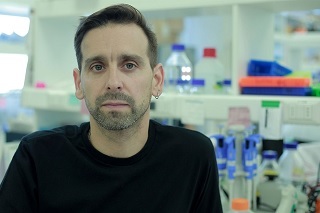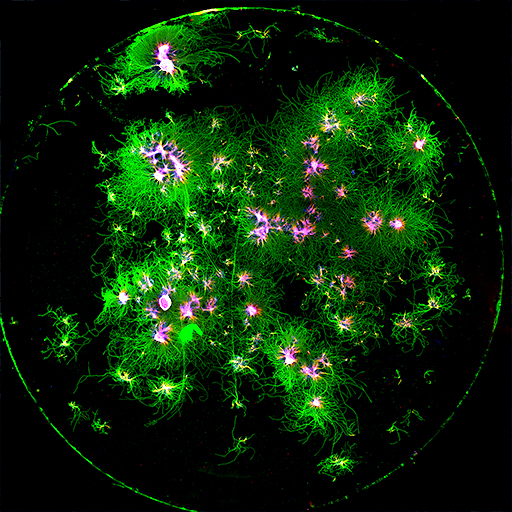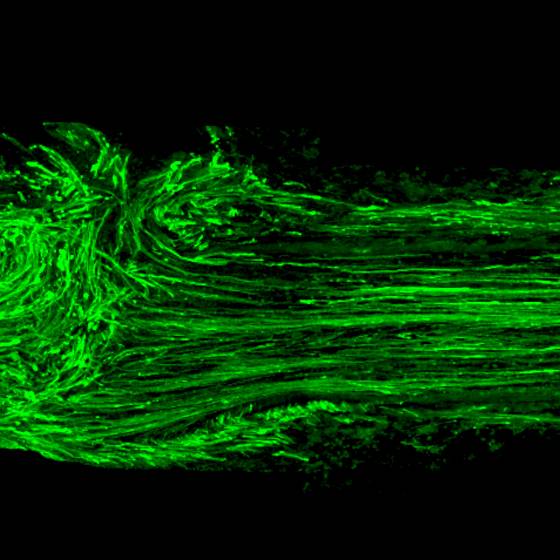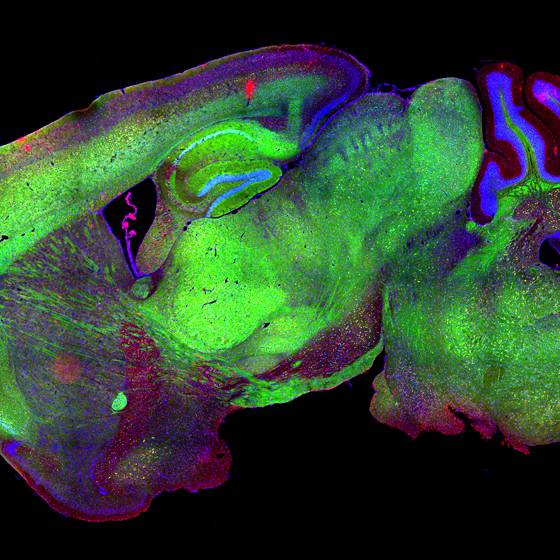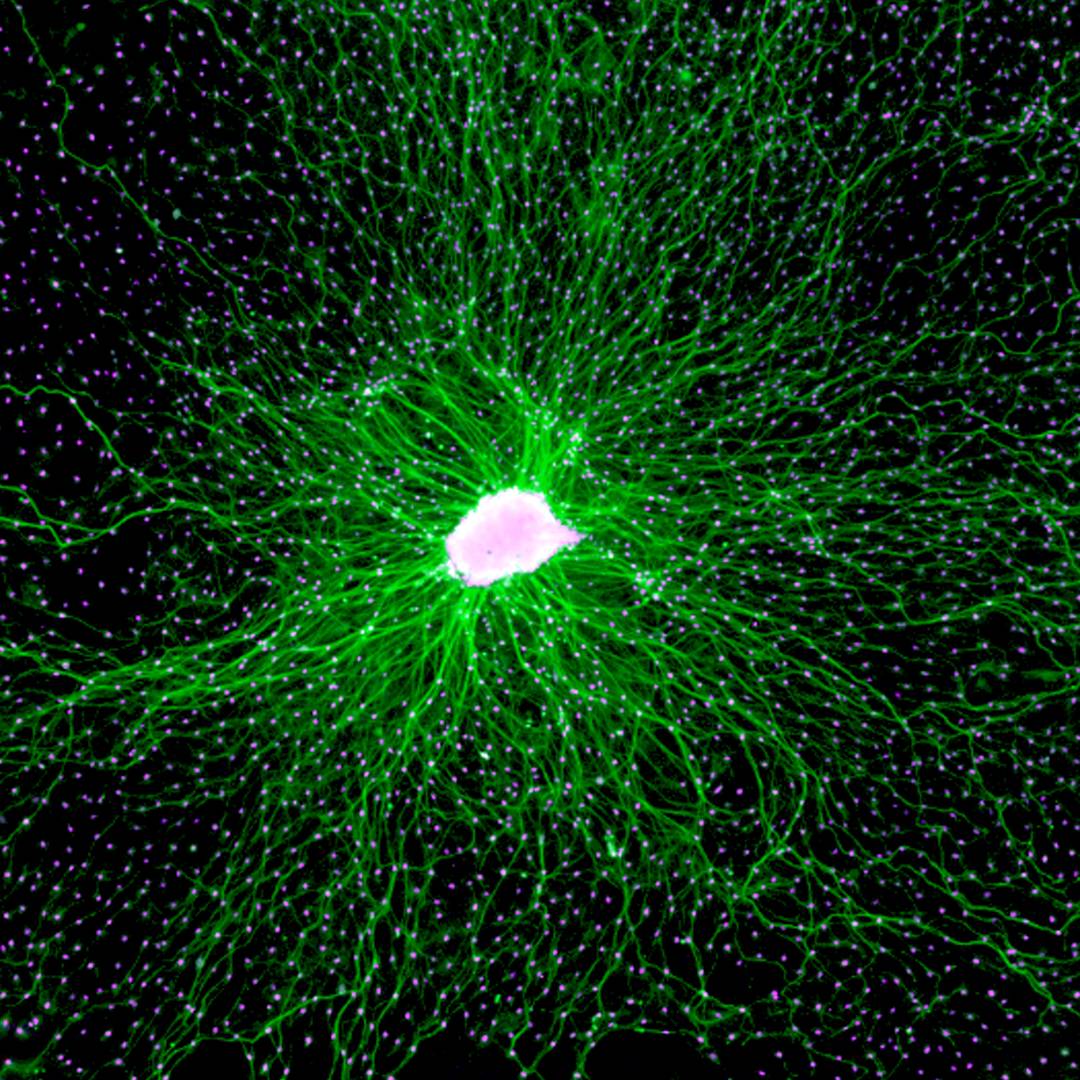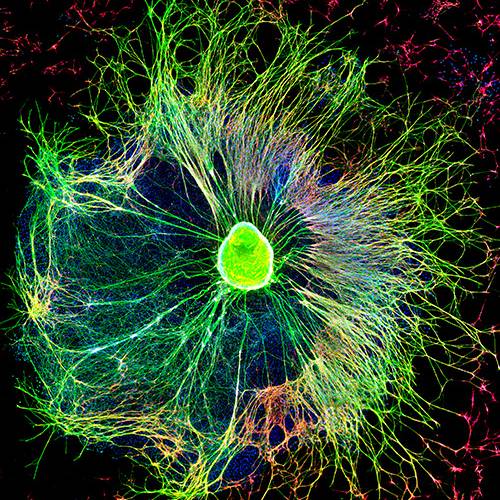Axonal Degeneration as a target for neuroprotection
Destruction programs are cellular mechanisms that have survival value when they operate under physiological control, but their malfunction could be deleterious for the organism. Apoptosis, or programmed cell death, is a well-known physiological destruction mechanism most apparent during development but persisting throughout the organism’s life. Other destruction programs are emerging as physiological processes that may not terminate in the destruction of the whole cell but only of restricted cellular domains. In the case of neurons, pruning of exuberant branches of terminal arborizations and degeneration of axons severed from their cell bodies are outstanding examples. Importantly, axonal degeneration is an early event in neurodegenerative condition including Alzheimer´s and Parkinson disease, as well as peripheral neuropathies. We are interested to define molecular players in the process of axonal degeneration to find therapeutic targets for neuroprotection.
Golgi staining of a mouse hippocampal section, with this technique, sparse neuronal labelling is obtained, which allows detailed analysis of individual neurons.

The degeneration of axons constitutes a salient feature shared by several neurodegenerative diseases that contributes to neuronal dysfunction and cell death. To date, the precise molecular and cellular mechanisms of axonal degeneration are under intense investigation. The morphological evidence indicates that axon degeneration as a consequence of aging and neurodegenerative diseases takes place in a retrograde fashion also known as dying back degeneration, which precedes cell death of the neuronal soma. Axon degeneration shares several characteristics with cell death by activation of the necroptotic signaling pathway, including mitochondrial dysfunction, ROS production, and intracellular calcium increase, and we have found that necroptosis inhibition by genetic or pharmacological means delays axonal degeneration in neurons from the peripheral and central nervous systems, as well as in model of Alzheimer´s and Parkinson Disease.
People involved
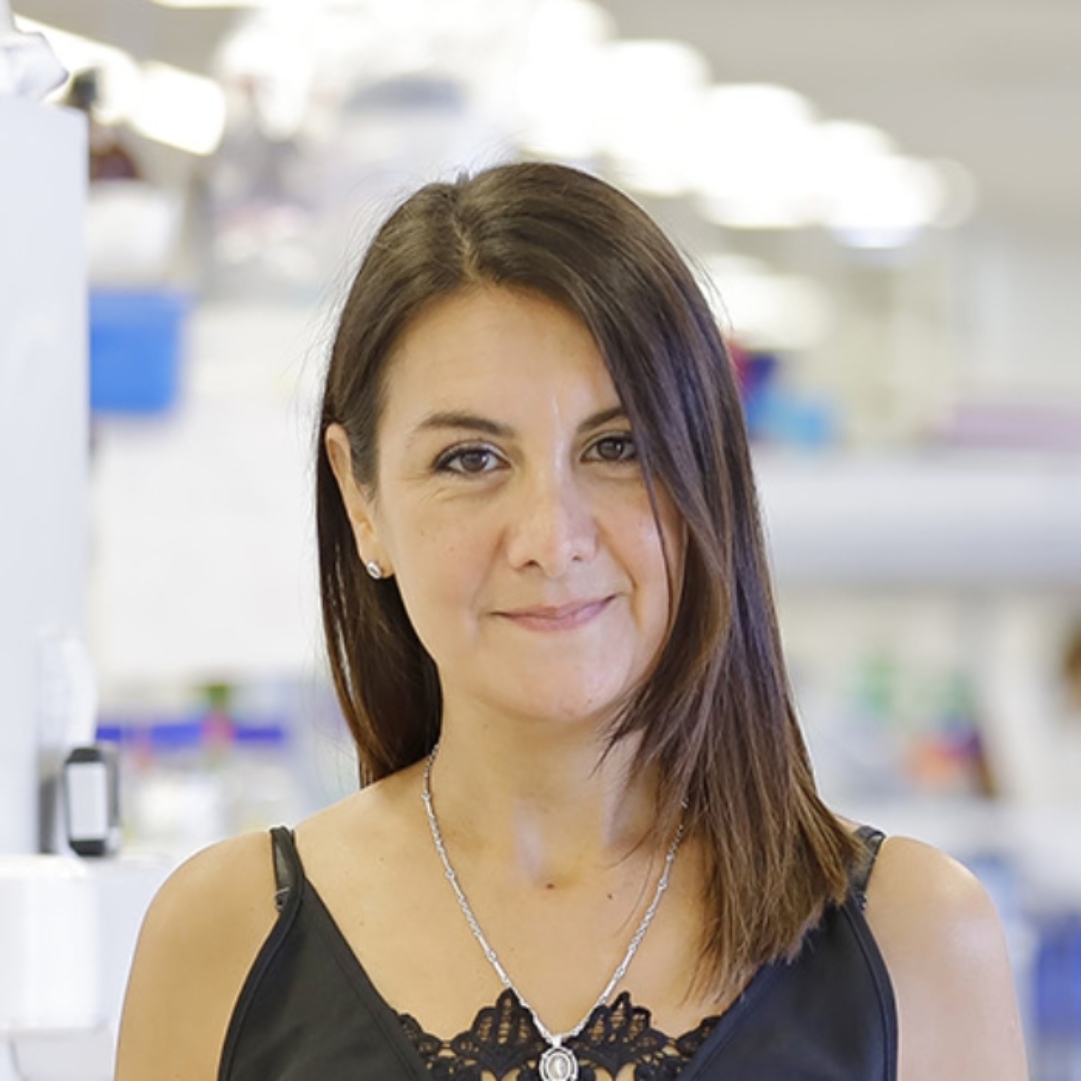
Macarena Arrazola
PI collaborator

PhD in Biological Sciences from the Catholic University of Chile. Studying the contribution of necroptosis in the age-associated axonal degeneration of the hippocampus, and the impact of using pharmacological approaches to revert neuronal dysfunction and cognitive impairment during aging, proposing necroptosis as an attractive target for the future development of geroprotective tools to treat age-related disabilities.

Daniela Rebolledo
Senior Research Assitant

BI am a Biochemist from Pontificia Universidad Católica de Chile (PUC) and PhD in Cell and Molecular Biology from the same university. My PhD thesis research was performed at the Physiology and Biophysics department, University of Washington. My research has focused on the physiology of the neuromuscular system and the pathological mechanisms behind neuromuscular disorders of diverse etiology.

Genesis Vega
Postdoctoral fellow

Bachelor’s degree in Biochemistry at the Universidad Austral de Chile. PhD in Sciences with mention in cellular and molecular biology at the Universidad Austral de Chile carried out at CECs and University of Heidelberg. Studying the role of NAD+ imbalance in the activation of necrosome and dysfunction of mitochondrial metabolism in chemotherapy-induced axonal degeneration in aged peripheral neurons.
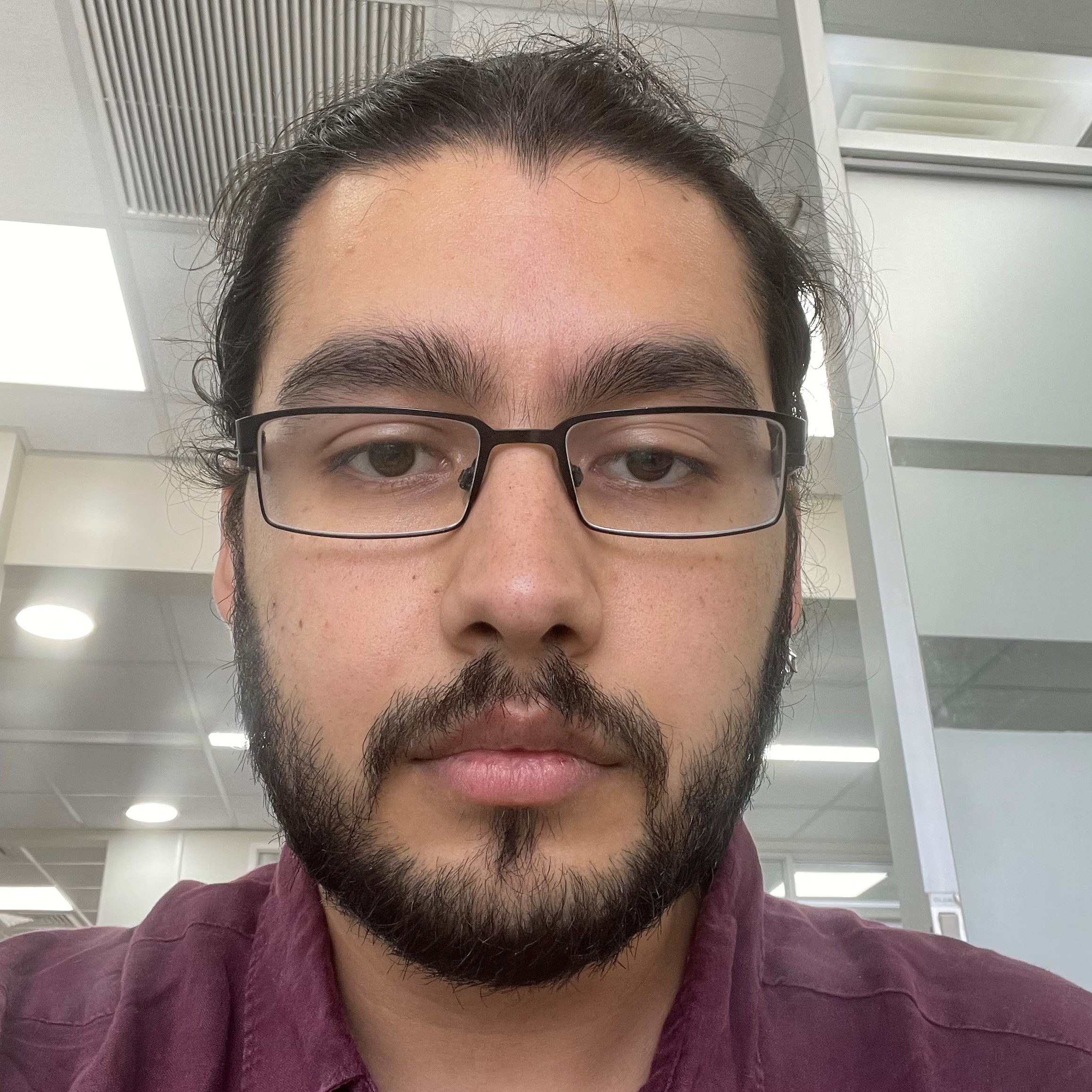
Rodrigo Leiva
Research Assitant

B.Sc(hons) degree in Neuroscience from the University of Glasgow and M.Sc in Integrative Neuroscience from the University of Edinburgh. I’m currently working on the role of axonal necroptosis and inflammation in the dopaminergic neurons of the nigrostriatal pathway in Parkinson’s Disease to assess it as a potential therapeutic target through the inhibition of RIPK3.
Related Publications
PUBLICATIONSDataPNSNeuroRegeneration
octubre 4, 2021
Schwann cell-derived exosomes enhance axonal regeneration in the peripheral nervous system.
Lopez-Verrilli MA, Picou F, Court FA.
Glia. 2013 Nov;61(11):1795-806. doi: 10.1002/glia.22558. Epub 2013 Aug 30.
PMID: 24038411
PUBLICATIONSProtocolNervous System Fx
octubre 4, 2021
Measurement of autophagy flux in the nervous system in vivo.
Castillo K, Valenzuela V, Matus S, Nassif M, Oñate M, Fuentealba Y, Encina G, Irrazabal T, Parsons G, Court FA, Schneider BL, Armentano D, Hetz C.
Cell Death Dis. 2013 Nov 14;4(11):e917. doi: 10.1038/cddis.2013.421.
PMID: 24232093
PUBLICATIONSDataPNSCNSNeuroDegeneration
octubre 4, 2021
Trehalose delays the progression of amyotrophic lateral sclerosis by enhancing autophagy in motoneurons.
Castillo K, Nassif M, Valenzuela V, Rojas F, Matus S, Mercado G, Court FA, van Zundert B, Hetz C.
Autophagy. 2013 Sep;9(9):1308-20. doi: 10.4161/auto.25188. Epub 2013 Jun 6.
PMID: 23851366
PUBLICATIONSReviewNervous System FxPNS
octubre 4, 2021
Transfer of vesicles from schwann cells to axons: a novel mechanism of communication in the peripheral nervous system.
Lopez-Verrilli MA, Court FA.
Front Physiol. 2012 Jun 13;3:205. doi: 10.3389/fphys.2012.00205. eCollection 2012.
PMID: 22707941
Related News
Párkinson, demencia y sistema nervioso: Así trabaja el Centro GERO U. Mayor
octubre 14, 2021
La iniciativa, que pretende estudiar el envejecimiento en Chile, renovó su proyecto por los próximos 5 años, lo que permitirá que los investigadores de la U. Mayor sigan investigando las enfermedades…
Centro Gero de la U. Mayor renueva por 5 años proyecto que estudia el envejecimiento en Chile
octubre 14, 2021
A través del Centro de Biología Integrativa, dirigido por el Dr. Felipe Court, diversos investigadores trabajan en proyectos que pretenden anticipar la aparición de enfermedades y entender cómo los…
